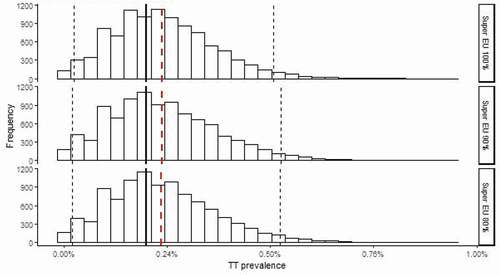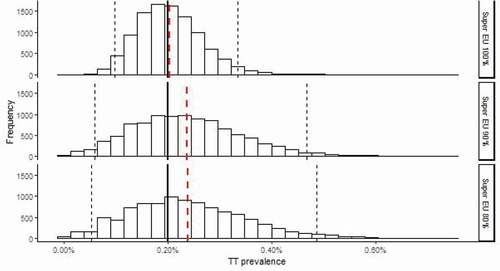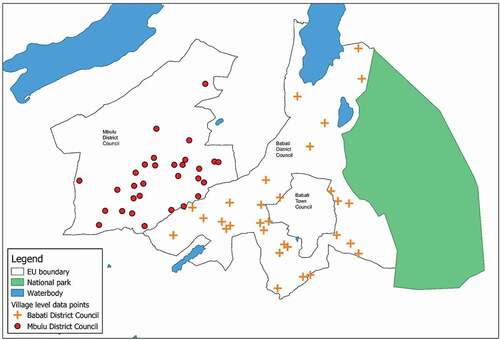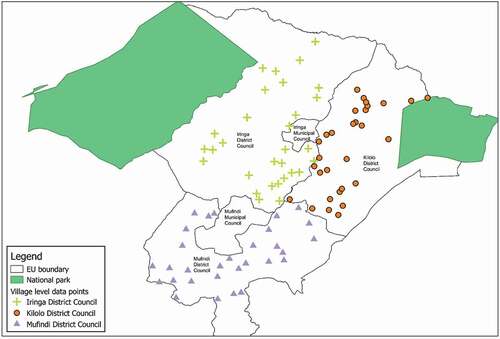Figures & data
Table 1. Baseline TT survey results.
Table 2. Opportunity 1, 2018 unknown to the health system prevalence estimates.
Figure 3. Opportunity 1 distribution of super EU unknown to the health system bootstrap results with modulating sample sizes. Dashed lines represent 95% confidence intervals and the red dashed lines represent the mean; solid lines represent the elimination threshold of 0.2%.

Table 3. Opportunity 1, 2018 super EU unknown to the health system prevalence estimates with modulating sample sizes.
Table 4. Opportunity 2, 2018 prevalence estimates.
Figure 4. Opportunity 2 distribution of super EU unknown to the health system bootstrap results with modulating sample sizes. Dashed lines represent 95% confidence intervals and the red dashed lines represent the mean; solid lines represent the elimination threshold of 0.2%.

Table 5. Opportunity 2 super EU prevalence estimates with modulating sample sizes.


